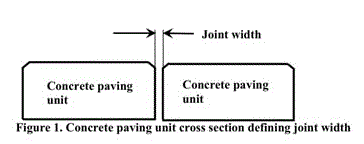Industry tolerances developed as part of this project
The following is an excerpt from the 2009 TCA Handbook, published by the Tile Council of North America.
Accessibility:
When ceramic tile is used as the flooring surface, design professionals should consider the following, based on ANSI A108.01 and A108.02, where accessibility is a primary consideration.
Accessible - Changes in Level:
Changes in level up to 1/4" may be vertical and without edge treatment. Changes in level between 1/4" and 1/2" shall be beveled with a slope no greater than 1:2. Changes in level greater than 1/2" shall be accomplished by means of a ramp. The maximum slope of a ramp in new construction shall be no greater than 1;12. Ramps where space limitations prohibit this may have slopes and rises as follows: a slope between 1:10 and 1:12 is allowed for a maximum rise of 6", and a slope between 1:8 and 1:10 is allowed for a maximum rise of 3 inches. A slope greater than 1:8 is not allowed.
Accessibility - Flatness and Lippage:
With regard to flatness, the amount of substrate variation generally is reflected in the finished tile installation. For any application, a tiled floor should comply with the flatness requirements in ANSI A108.02: "no variations exceeding 1/4" in 10 feet from the required plane." Conformance to this standard requires that subfloor surfaces conform to the following: no variation greater than 1/4" in 10 feet, nor 1/16" in 1 ft. from the required plane. For modular substrate units, such as plywood panels, adjacent edges cannot exceed 1/32" difference in height. Additionally, the effect from irregularities in the substrate increases as the tile size increases. A subsurface tolerance of 1/8" in 10’ may be required.
Because the flatness of wood and concrete substrates can change over time, it is recommended that the designer make provisions for evaluating substrate flatness just before installation of the tile. Project specifications should make clear which trade is responsible for the required alterations if the subfloor is found not to be in compliance with the flatness requirements. Alternatively, the designer may choose to incorporate a mortar bed method or a pourable underlayment installed by the tile contractor to ensure substrate flatness sufficient to facilitate a flat tile installation.
Lippage is most significantly influenced by substrate flatness and tile warpage. Allowable lippage is calculated by adding the actual warpage of the tile supplied, plus either 1/32" (if grout joints and 1/4" or wide). Specifying wider grout joints allows for more gradual changes. To minimize lippage due to arpage, specify tile that meets the dimensional requirements for rectified tile according to ANSI A137.1, and use a larger grout joint. Some patterns, such as a 50% off - set (brick - joint) pattern, accentuate the effects of warpage and result in more lippage than other patterns would. Cushioned or beveled - edge tiles can minimize the effects of lippage.
In addition to taking measures to ensure a flat substrate, designers should consult with the tile manufacturer to discuss grout joint size and tile and pattern selections that will minimize issues relating to flatness and lippage.
The following are the tolerances published by the Interlocking Concrete Pavement Institute as a result of this project.
Interlocking Concrete Pavement Institute
Construction Tolerances for Segmental Concrete Pavements
This guideline applies to construction of interlocking concrete pavements (concrete pavers), permeable
interlocking concrete pavements (Plep), and precast concrete paving slabs.
| Setting Bed Materials | Joint Widths | Construction Tolerances |
| Sand setting beds for concrete pavers and paving slabs | Joint width between adjacent units (See Figure I) |
1/16 in. (2 mm) to 3/16 in. (5 mm) |
| Bituminous setting beds for concrete pavers and paving slabs | Joint width between adjacent units (See Figure I) |
1/16 in. (2 mm) to 3/16 in. (5 mm) |
| Mortar setting beds for concrete pavers and paving slabs | Joint width between paving units with no chamfers (See Figure 1) | Maximum 3/8 in. (10 rom) - Joints between individual paver units shall be mortared flush with adjacent pavers. |
| Mortar setting beds for concrete pavers and paving slabs | Joint width between paving units with chamfers (See Figure I) | Maximum 3/8 in. (10 rom) - The surface of the mortared joint meets the bottom of the chamfers between adjacent pavers. |
| Open - graded aggregates for PICP | Joint width between paving units (See Figure 1) | oto +3/16 in. (5 mm) of the paver manufacturer's recommended joint width dimension |
| Pedestals for supporting precast concrete paving slabs (ie., 12 x 12 in.(300 x 300 mm) and larger length x width) | Joint width between paving slabs resting on pedestals (See Figure I) | oto+1/8 in. (3 rom) of paving slab manufacturer's recommended joint width dimension for pedestal setting materials |
| Attribute | Segmental Concrete Paving Products & Cbaracteristics | Construction Placement & Surface Tolerances |
| Joint or bond lines | All segmental concrete paving products: Horizontal deviation | Maximum ±1/2 in. (15 mm) horizontal deviation from either side of a 50 ft (15 m) string line ]lUlled over a ioint or bond line |
| Laying Pattern | Laying pattern concrete pavers and PICP: Laying pattern .. Concrete paving slabs: Laying pattern .. |
..90 degree herringbone ..Stack bond or runningbond |
| Slope in direction of travel | All segmental concrete paving products: Maximum 7.83 percent |
+0.5 percent, no requirement for minus |
| Slope perpendicular to direction of travel | All segmental concrete paving products: Maximum 2.0 percent |
+0.5 percent, no requirement for minus |
| Surface smoothness | All segmental concrete paving products: Variation in height between adiacent units (lippage) | Maximum 1/8 in. (3 mm) |
| Surface flatness | All segmental concrete paving products: Surface tolerance | ±3/8 in. (10 mm) over 10 ft (3 m), noncumulative |


User Comments/Questions
Add Comment/Question